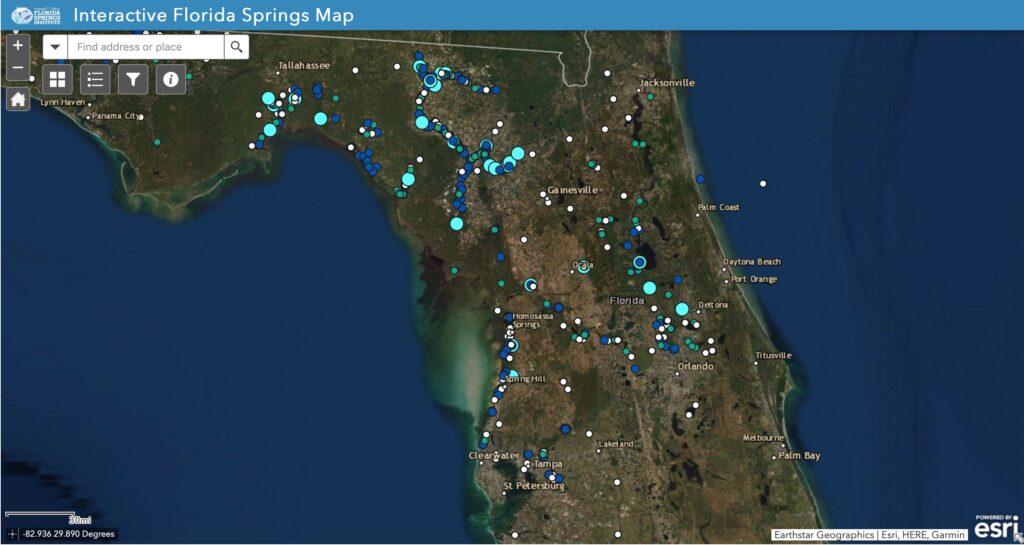That Incredible Water
 The Florida Spring Region (according to the Howard T. Odom Florida Springs Institute) “comprises more than 27 million acres and extends from south of the I-4 corridor from Sarasota to Okeechobee counties, north through the Florida Panhandle. The Floridan Aquifer supplies water to more than 1,000 artesian springs in Florida, the greatest concentration of large springs in the world.”
The Florida Spring Region (according to the Howard T. Odom Florida Springs Institute) “comprises more than 27 million acres and extends from south of the I-4 corridor from Sarasota to Okeechobee counties, north through the Florida Panhandle. The Floridan Aquifer supplies water to more than 1,000 artesian springs in Florida, the greatest concentration of large springs in the world.”

It may be hard to believe, but we in Florida are sitting right on top of the greatest concentration of springs in the world. The Springs Institute monitors our local springs, as it has for almost a decade. But more than that, it provides educational resources valuable to understand what is happening with our springs. The Springs Institute’s Interactive Map provides a way to understand the number and output of springs across the region. They help you understand what a clear healthy spring is.
A Healthy Spring Checkup
Just like with your annual health checkup, springs have key measurements that let us know they are OK. The primary elements that tell us a spring’s health are:
- Water Volume: the total flow of the spring in gallons or cubic feet/meters.
- Water Clarity: A lack of particles and dissolved organic matter.
- Dissolved material: Everything from dissolved oxygen (indicating health) to dissolved nitrogen and phosphorous (often from fertilizer or septic systems) indicates health.
It is not in the public’s best interest to dry up or pollute any of Florida’s artesian springs. Healthy springs support a vast and abundant assemblage of charismatic and endangered wildlife, nourish our many rivers and lakes during droughts, and are the sought-after playground for tens of millions of visitors each year. Source
Remembering Healthy Springs
Talk to anyone who has lived here a long time. Many will say that for years the mullet were so thick you could catch all you wanted with one throw of the net. With just a few crab traps, you could catch enough to provide an easy meal for your family. The healthy springs we had were crystal clear. You could see a quarter on the bottom and tell if it was heads or tails.
In common terms a healthy spring means clear water. When the water doesn’t have high nitrate levels, small organisms do not cloud the water. But plants are also a big part of a healthy spring. Vegetation provide a place for small worms and crabs to live. It also provides a place for fish to hide and spawn. Once all of these small animals are in a spring, birds and otters will also be there. A healthy spring is alive.
Doing Your Part
You can help bring these springs back to their healthy state by talking with your neighbors. Support our project. Be aware that everything you do around the water can make a difference. Think about fertilizer. Be careful about water use.
And if you can help us please donate. We promise to treat every dollar with care. Your donation will make a difference.
